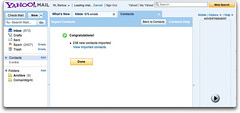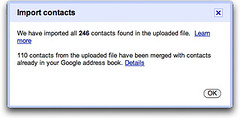I’ve been on the internet more than half my life. I consider myself a digital native.
Today many people are protesting the SOPA and Protect IP Act legislation that threatens the internet. This threat is real, as this legislation breaks some fundamental things about how the internet works. If you are interested in the technical details and arguments against this legislation, many have written about them. Here’s an interview with my friend Elliot Noss on CBC Radio talking about why his business has “gone dark” today.
This is a big issue, so I’m going to share some of my thoughts on why the internet is so important.
The Internet Is Made of People
From my early days on “Usenet”, what drew me was real people and their ideas. Usenet was a big distributed forum for people to talk about subjects ranging from computers (comp.sys.sgi) to rock climbing (rec.climbing) the game of go (rec.games.go). People on computers all over the world, connected on the internet and with dial-up UUCP connections, would talk about these topics, and it fascinated me. There were THOUSANDS of people out there!
Fast-forward to the early-90’s and this new thing called “The World-Wide Web” came along. I was at SGI when I first saw it, on an Irix machine running a browser built by some guys at a university. The Web quickly grew so big that whole businesses were created just to index it all.
The internet grew all sorts of businesses, many of them crazy. But for me, it was still about people. When I came to Silicon Valley many years ago, I knew I was going to be surrounded by brilliant people. Now, with the internet I can find them wherever they are… no matter where I am — The people AND their ideas.
The Internet is Made of Ideas
My internet wanderings have always followed my interests. I found people out there talking about topics that interested me. It was wonderful! But no group of people ever stays “on topic”, so over time you get to know people and understand their ideas about the world. Exposure to new and different ideas makes your world bigger and richer.
My wife an I are aficionados of “Podcasts”. They are really just radio or TV shows, but packaged for the internet. But you don’t just watch what’s on, like we did back when there were just three channels on the TV. You get to pick! We love to listen to smart people talk about interesting ideas, so we listen to TEDTalks. I like computers and tech, so I listen to shows from the TWiT network and 5by5, and we both love good story telling, so we listen to The Moth and This American Life.
All over the world there are people with something to say. More than any other invention, the internet allows people with ideas to be heard; to spread their ideas. I believe this will make the world a better place.
Because…
The Internet is What We Make it
What we do, say, and look at on the internet makes it become what it will be.
Let’s use Google Search as an example. Google’s original search algorithms considered page linking structure as an indicator of value and intent. It was a way of measuring what people thought and what they valued. Google’s PageRank algorithm also considered that a link from a page with a high PageRank conveyed more PageRank forward to the linked page.
a page can have a high PageRank if there are many pages that point to it, or if there are some pages that point to it and have a high PageRank
http://infolab.stanford.edu/~backrub/google.html – Brin & Page,
In the intervening years, the Google algorithms have been improved and changed. Many of the changes are intended to reduce the influence of certain cynical forms of Search Engine Optimization (SEO) that seek to raise search listings artificially. Notably, the Google Panda update use machine learning algorithms to detect non-useful sites and reduce their search ranking.
At its best, SEO is about optimizing websites so that they are easy for search engines like Google to catalog and rank, and so that they earn the strong ranking and visibility they deserve. But there is a lot of SEO that is really just tricks to try to get attention. When the search engines fight back, the internet gets better. They all try. And when people choose quality content over link farms, they can succeed.
Quality content comes from real people. Whether they are making a funny cat video or writing an important essay, real people are behind the best on the internet.
The Internet is Important, But…
What is really important is US. You and Me. The ideas we share, the things that make us laugh, cry, and think. For this, the internet is just a medium. But it’s a medium that connects us throughout the world in a new way, spreading ideas and culture and making the world a better place. (Yes, that’s a long video, but Joi’s talk is worth every minute.)
The internet is under attack by corporations that are trying to protect their failing business models. They want you to believe that the internet is a problem to be fixed. Don’t believe them.
The internet is for making people heard, for allowing us to connect to one another. Don’t let the non-people take that away from us.










